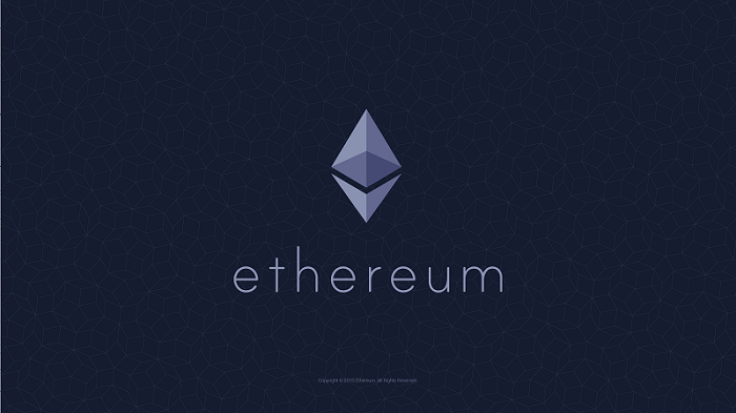Ethereum's William Mougayar: 20-plus banks testing blockchains outside consortium model

The Ethereum Foundation's William Mougayar says more banks are now implementing blockchain technology separate from their existing systems, and not defeating themselves worrying about the painful process of integration.
This could develop into a contentious issue. Those in the consortium camp believe first and foremost in an overarching design imperative driven by common standards. On the other hand, there is the huge amount of interest in Ethereum and its army of developers; the promise of Turing complete blockchain capability is now dangling before banks aided by the ConsenSys tie-up with Microsoft Azure cloud services.
Mougayar, a Canadian entrepreneur turned investor told IBTimes: "What I'm hearing is that some of them [banks] are starting to implement these [blockchains] separately from the old systems, because it's more difficult to integrate with the old. Any integration within a bank takes 18 months, two and half years perhaps. So rather than doing that are saying forget about it, let's do something new. Like to put a smart bond on its own and let it trade. It's easier than saying we are going to make sure it's all integrated with everything, which takes longer."
Mougayar said banks know their business better than anybody from the outside and it is therefore their own responsibility to understand what the blockchain does. "It's easier for them to understand the blockchain than for a blockchain person to understand their business."
He added: "The onus is on them to do these small projects so they can build the expertise and they can come up with insights."
Mougayar has been talking to banks a lot. "I'm not reading this; I'm on the ground talking to them. If you are thinking about the R3, I have acquaintances who work for them. So I'm kind of a neutral person, being friends with everybody, like a Switzerland of blockchain."
"There are probably a dozen banks doing stuff on Ethereum already without even being part of a consortium. You have to pay money to be part of it [R3] and it's still at the blueprint architectural stage."
R3 boasts the likes of blockchain specialists Richard Brown and Tim Swanson, as well as about 25 of the biggest banks on the planet – an open sandbox of some sort is expected soon.
Mougayar said: "But Ethereum is already in there without any consortium. It's like a more natural way of adoption. The banks on their own are trying these Ethereum technologies and if you count them all up, they number between 12 and 24 - because half of them are not saying anything."
Mougayar said that in addition to grass roots technology exploration, banks are looking at cost savings at the middle office and back office, to solve the vexing problem of post-trade settlement efficiency – something distinct from actual innovation.
"It's what Blythe Masters talks about and others that are going after that space. It's the post trade settlement problem, which is why you have custody banks holding billions of dollars and it takes three days to actually clear transactions. All of that could be collapsed - so what the blockchain does it collapses time into real-time. Then you save a lot of money. That's cost savings, it's not innovation really.
"Cost savings is the bottom line. The other thing is top line. Top line means new revenue, new initiatives. It's more difficult because you have to walk before you can run. So start to get familiarised, get experienced in the easier stuff, so that you can figure out what is more difficult."
The enterprise blockchain experimentation avenue was recently widened massively with the arrival of Microsoft on the scene and its blockchain-as-a-service on the Azure cloud.
"It was a brilliant announcement and it popped everybody up: Ethereum and ConsenSys and the blockchain."
Mougayar conceded that one should not put the "cart before the horse" with these one click verifications, and that some planning was necessary. But he said the main thing is get developers using the blockchain as means of moving and trading assets.
"The blockchain is an exchange for moving assets. The first generation of the internet was very information and content based. Then we had e-commerce, so you can buy something right away. Now I think the third aspect is the blockchain which is going to give us digital assets now that can be traded.
"And value is not just money - it's digital assets, it's bonds, it's stocks, it's new things we haven't thought about. So you are putting that on the rails. You are putting those assets on the autobahn whereas they were on the roads before."
The Ethereum Foundation, to which Mougayar is an advisory board member, was in the headlines over funding concerns stemming from the fall in bitcoin's value. This in turn prompted a brave post by Ethereum's chief scientist Vitalik Buterin, explaining the situation in completely transparent terms.
Mougayar said: "He [Buterin] is very truthful. A very nice guy, very truthful - almost to the point of hurting himself by putting truth first, which he did.
"If you look at Ethereum - even with the $9m that they supposedly didn't trade; even with the $9m off, with $9m only remaining - look what they have done.
"With half of the money there is 120 Dapps, there's multiple startups, there is companies behind it, there's 20 banks doing something with it, there's 2000 developers - is the glass half full or half empty?"
© Copyright IBTimes 2024. All rights reserved.






